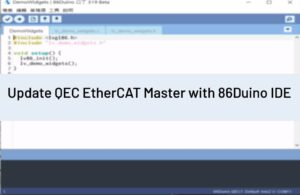[Bitwise Operators]
説明
The left shift operator << causes the bits of the left operand to be shifted left by the number of positions specified by the right operand.
Syntax
variable << number_of_bits;
Parameters
variable: Allowed data types: byte, int, long.number_of_bits: a number that is < = 32. Allowed data types: int.
Example Code
int a = 5; // binary: 0000000000000101 int b = a << 3; // binary: 0000000000101000, or 40 in decimal
Tips
When you shift a value x by y bits (x << y), the leftmost y bits in x are lost, literally shifted out of existence:
int x = 5; // binary: 0000000000000101 int y = 14; int result = x << y; // binary: 0100000000000000 - the first 1 in 101 was discarded
If you are certain that none of the ones in a value are being shifted into oblivion, a simple way to think of the left-shift operator is that it multiplies the left operand by 2 raised to the right operand power. For example, to generate powers of 2, the following expressions can be employed:
Operation Result
--------- ------
1 << 0 1
1 << 1 2
1 << 2 4
1 << 3 8
...
1 << 8 256
1 << 9 512
1 << 10 1024
...The following example can be used to print out the value of a received byte to the serial monitor, using the left shift operator to move along the byte from bottom(LSB) to top (MSB), and print out its Binary value:
// Prints out Binary value (1 or 0) of byte
void printOut1(int c) {
for (int bits = 7; bits > -1; bits--) {
// Compare bits 7-0 in byte
if (c & (1 << bits)) {
Serial.print("1");
}
else {
Serial.print("0");
}
}
}See also
- [Example] BitMath Tutorial
Language Reference Home
86Duino のリファレンスのテキストは Arduino レファレンス を編集したもので、 Creative Commons Attribution-ShareAlike 3.0 License下でライセンスされています。リファレンス内のコードサンプルはパブリックドメインとして公開されています。



